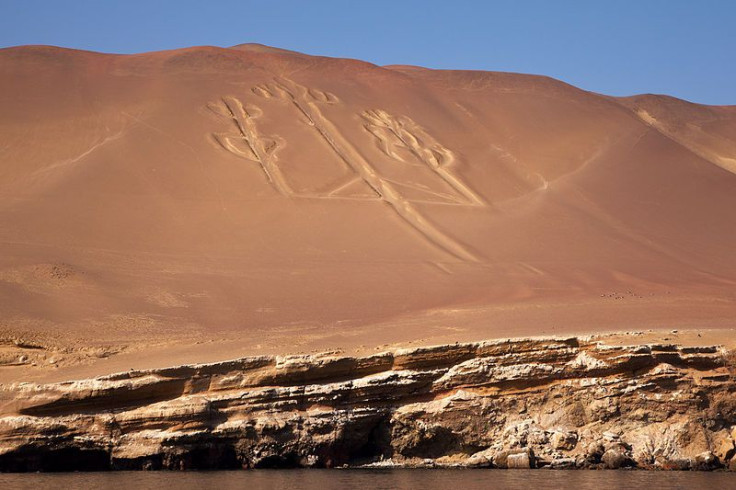2,300-Year-Old Rock Lines In Peru Are Examples Of Ancient ‘Social Technology’

Ancient lines made of earth and stone that were recently uncovered in the Chincha Valley desert of Peru likely served as signposts leading 4th-century partygoers to fairgrounds.
Archaeologists attributed the stone lines, or geoglyphs, to the Paracas culture, an Andean civilization that occupied southern Peru from 800 to 100 B.C. The lines are spread out over several kilometers and include at least two U-shaped structures that marked the setting sun.
Researchers in the U.S. dated the lines to about 300 B.C., making them at least 300 years older than the earliest Nazca lines, famous geoglyphs made to look like various animals, including monkeys and birds. The Nazca culture, another Andean society, followed the Paracas culture and flourished from 100 B.C. to 800 A.D.
The discovery of the 2,300-year-old lines was detailed in a new study published Monday in the journal Proceedings of the National Academy of Sciences. The research provides clues about how people in stateless societies organized their social, economic and political lives.
"[The Paracas culture] used the lines in a different way than the Nazca," Charles Stanish, an archaeologist at the University of California, Los Angeles, and lead author of the study, told Live Science. "They basically created these areas of highly ritualized processions and activities that were not settled permanently.
The Chincha Valley contains ruins of five settlements. Several small pyramids built by the Paracas dot the landscape and contain artifacts from everyday life, including baskets and pottery. Large manmade mounds contain the remains of maize and sugarcane that date to between 400 and 100 B.C.
Stanish and his team used GPS technology to map a 30-square-kilometer area of the Chincha Valley. They plotted the several desert mounds, settlements and 71 geoglyphs. They noted that certain geoglyphs distinctly marked the way to particular mounds or settlements, suggesting that the rock lines served to lead ancient Paracas to areas where trade or social gatherings took place.
Researchers believe the ancient “fairgrounds” were built on land that couldn’t be farmed and were meant to attract tradespeople from the coast and the Andes highlands.
“The lines are effectively a social technology,” Stanish told Live Science. “They're using it for certain purposes. Some people have said the lines point out sacred mountains. Sure, why not?”
Stanish suggests the settlements marked by different rock lines were controlled by distinct political or ethnic groups. It’s likely that each settlement built its own geoglyphs to draw merchants in.
“They’re converting this landscape into a big theater, and the ultimate goal is to bring people together to market, exchange goods, manufacture goods, exchange marriage partners, gossip, do all the things people like doing,” Stanish told Science. “And then they’re competing with each other to bring in the most supporters.”
If the Paracas name sounds familiar, you may have heard of them in reference to a set of 3,000-year-old alien-shaped skulls discovered in the early 20th century at a massive graveyard in Paracas.
Recent DNA analysis showed that the skulls contained genetic material that doesn't match any known genetic DNA information. Scientists suggest the skulls could belong to an entirely new species.
© Copyright IBTimes 2024. All rights reserved.












